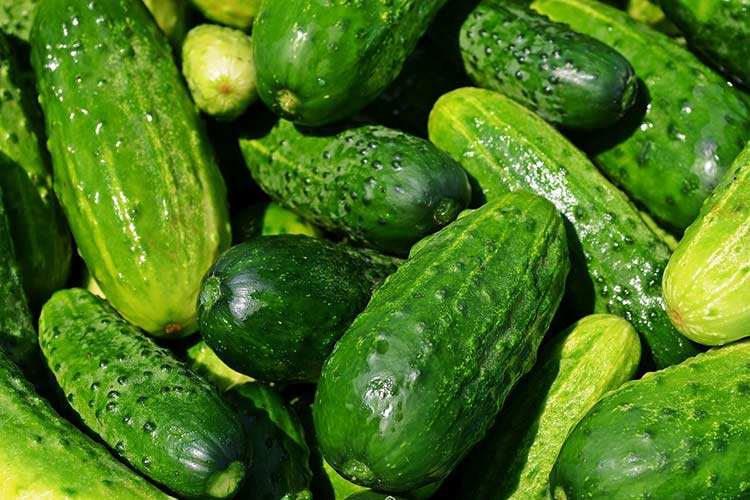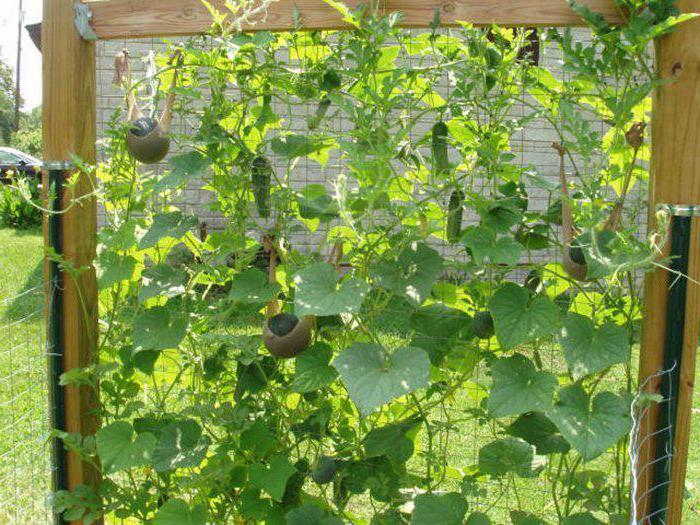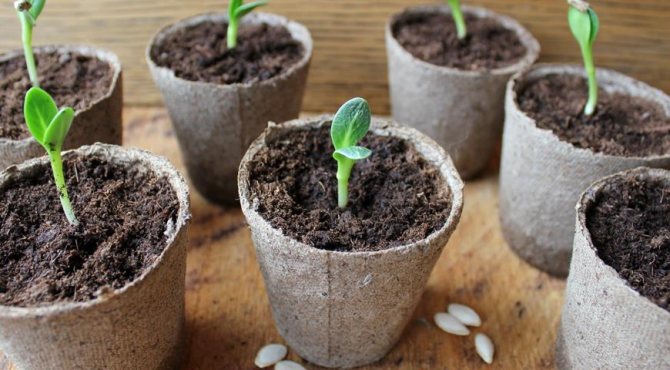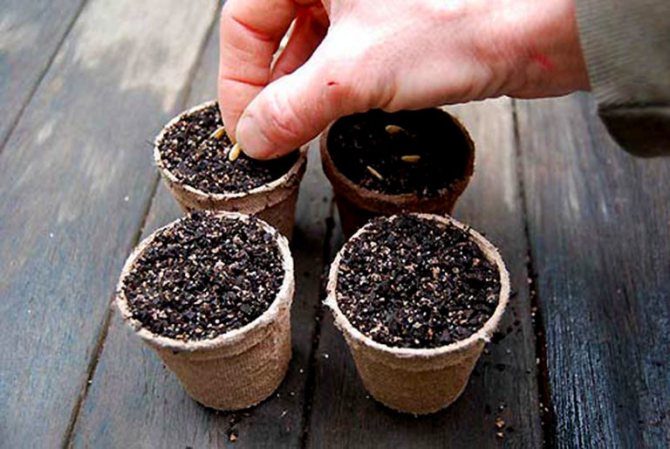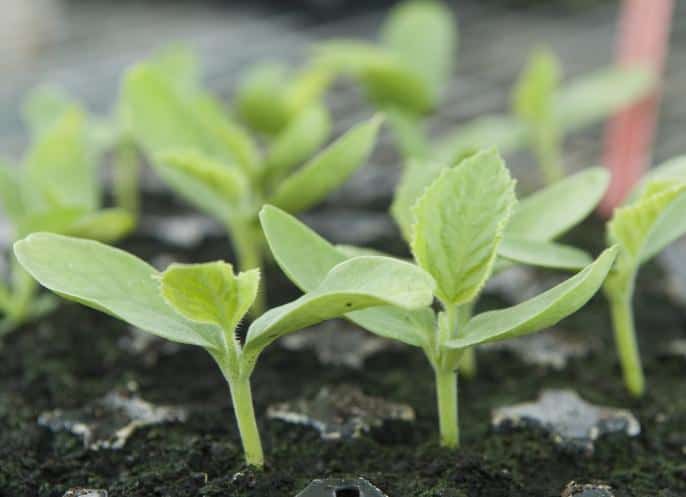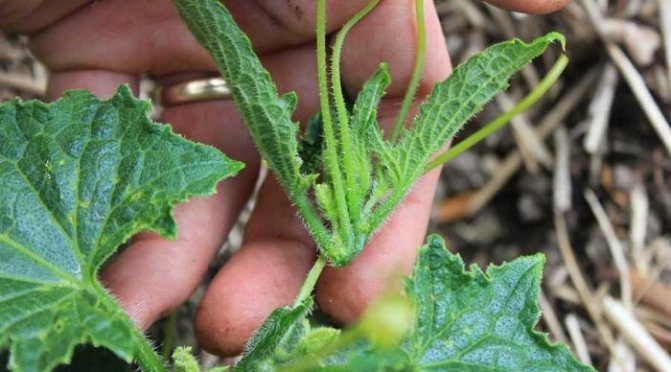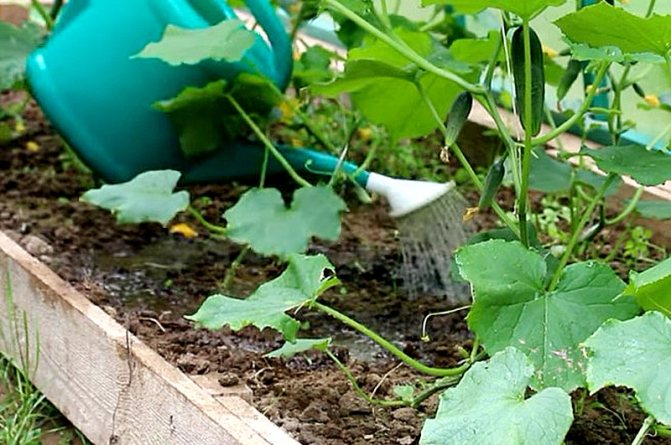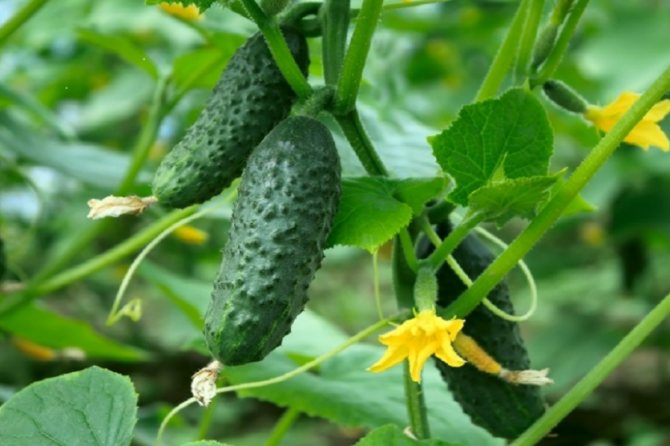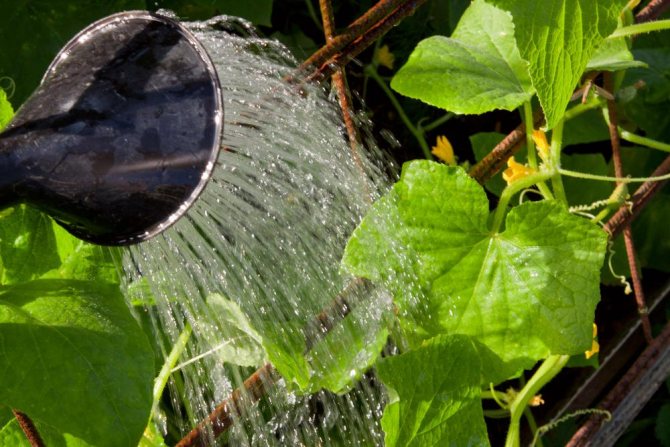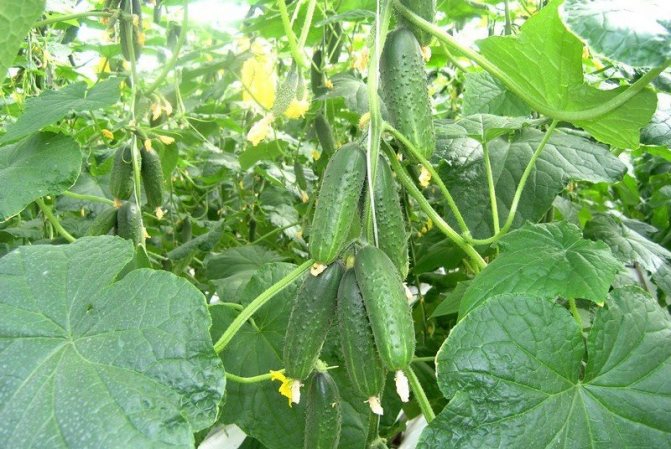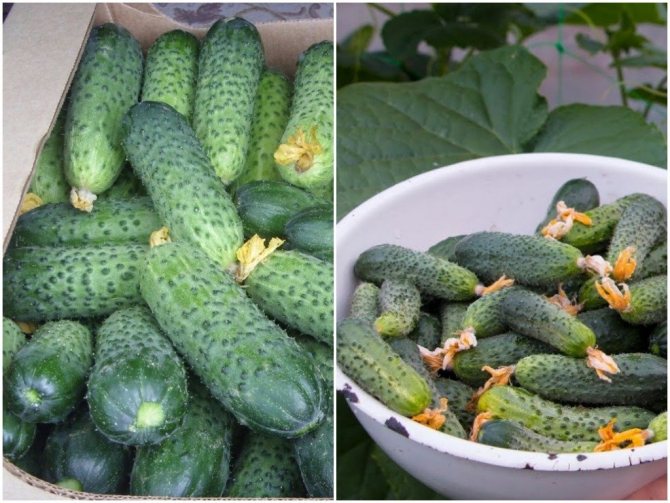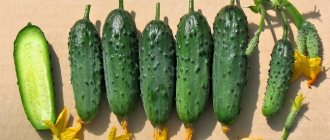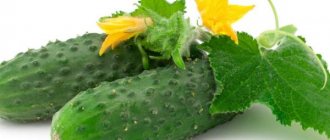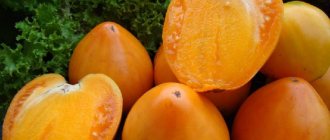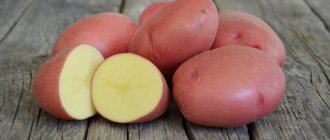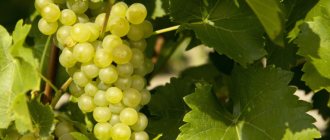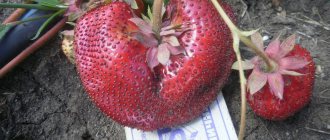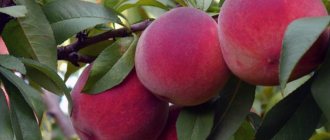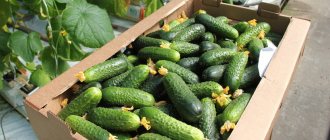Who does not know and does not love cucumbers! In greenhouses and hotbeds, in the garden beds and even on the balcony - they are successfully grown everywhere. Long and smooth salad greens, short sturdy guys “with pimples” for pickling - every year breeders delight us with new varieties, and we experiment on the beds, so that later we will crunch with pleasure with fresh or pickled cucumbers. Surely in your country house they also grow. And you, most likely, have already accumulated considerable experience, solved more than one “cucumber problem”. Indeed, for all the seeming simplicity of cultivation, in different regions, in different climates, this culture behaves differently. And the secrets of a fruitful cucumber garden depend directly on the choice of a variety of cucumbers. Despite the fact that for normal ripening cucumbers need a set of certain conditions, thanks to the efforts of breeders, they are now cultivated in different climatic zones and on soils of different composition. One of the popular varieties of cucumbers is Herman F1. Due to its early ripening period and universal purpose, it is used both in personal subsidiary plots and for growing in commercial volumes.
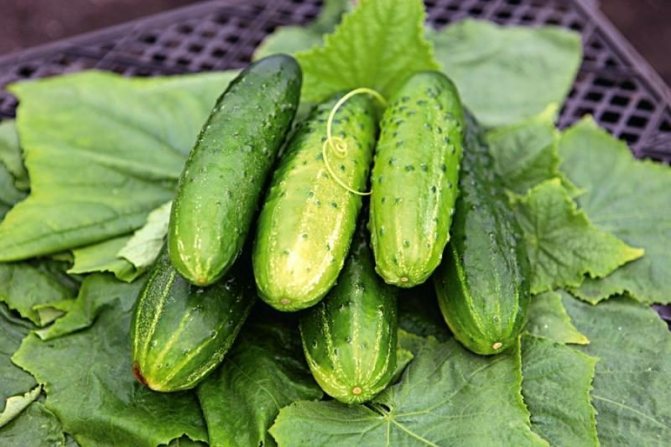
Characteristics of the cucumber variety German F1
The hybrid variety of cucumbers German F1 was allowed to grow on the territory of the Russian Federation back in 2001, and during this time he managed to catch the fancy of both amateurs and experienced gardeners, without yielding his leadership to this day. German F1 is a versatile variety that is suitable for growing in greenhouses, outdoors and farms in large areas.
The description of the German F1 cucumber variety on the package is incomplete, so you should study all the subtleties of this hybrid.
An adult cucumber shrub grows to a medium size and has a growing endpoint of the main stem.
Fresh articles for gardeners, gardeners and florists
How to grow petunia from seeds at home for seedlings
Planting carrots in spring sowing when to sow how to plant correctly
Lunar calendar for april 2020 gardener and gardener
Pruning an apple tree in spring for beginners in pictures step by step
Attention! Flowers of the female type, do not require pollination by bees, bright yellow in color.
The leaves of the bush are medium in size, dark green. The cucumber Herman F1 itself is cylindrical in shape, has an average ribbing and moderate tuberosity, the thorns are light. The rind is dark green in color, has a slight mottling, short white stripes and a slight bloom. The average length of cucumbers is 10 cm, diameter is 3 cm, and the weight is not more than 100 grams. The pulp of cucumbers has no bitterness, with a sweetish aftertaste, light green in color and medium density. Due to its taste, the German cucumber variety is suitable not only for pickling for the winter, but also for fresh consumption in salads.
How to care for a plant
To obtain a noble harvest, Herman cucumbers require special care. If you leave the plant to itself, the fruit will grow small, shapeless and bitter. The gardener should know that cucumbers need constant supervision and regular watering. If you plan to leave for more than a week, it is recommended that you take care of assigning responsibility to someone else in advance or connect an automated irrigation system.A sensor that regulates the flow of water at a certain time is expensive and does not always justify the purpose.
Watering
As you know, cucumbers are 85% water, therefore they require a lot of liquid and compliance with the regime. On average, it is recommended to water the bushes of the Herman variety every three days, while avoiding two main mistakes of novice gardeners:
- Do not water Herman cucumbers with cold water. This leads to a sharp drop in immunity, unstable functioning of the functions of the roots and, as a result, developmental lag.
- Do not water the plant too abundantly, leading to the accumulation of liquid near the trunk. Excess water will cause root decay and the development of stem fragility.
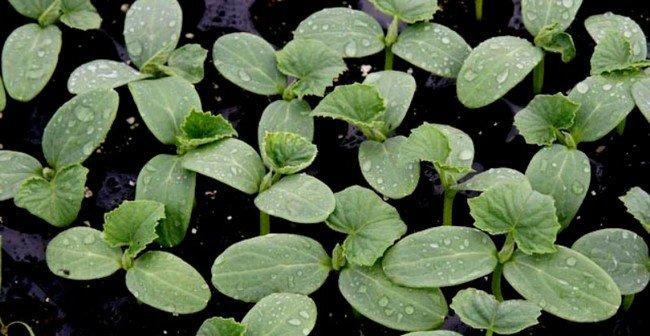

Loosening the soil
It is recommended to loosen the soil for Herman cucumbers regularly, about the second day after watering - then the soil is wet, but not very sticky to the tool. Also, in parallel, it is imperative to get rid of weeds. When wielding a sharp metal tool at the roots, it is important not to touch the plant, otherwise a wound will form. If it was not possible to avoid cutting the stem, it is required to treat this place with Bordeaux liquid.
Hilling
Hilling cucumbers is not a mandatory procedure, and many gardeners do not recommend doing this, since the roots are easily damaged in the process. However, a carefully performed procedure can improve the intake of mineral elements and increase yields.
See also
Description of the cucumber variety Marinda F1, cultivation and care
To read
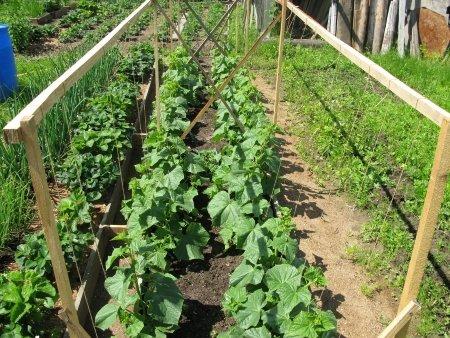

Forming a whip
To begin with, it is recommended to draw out trellises next to each bush, on which the whip will subsequently be attached. In the greenhouse, the crossbeams are the basis, however, to form a tying system in open ground, you will have to think about the design. It is recommended to engage in the formation of a lash from the first days of disembarkation. For this, the lower leaves are removed.
Important! The procedure is done with garden shears, not with your hands. Otherwise, there is a chance of damaging the bush. It is recommended to form it when the bush reaches 4 centimeters.
It is not recommended to completely get rid of side shoots, it is better to pinch at a distance of 20 centimeters. The number of shoots saved depends on the gardener, but no more than three is recommended.
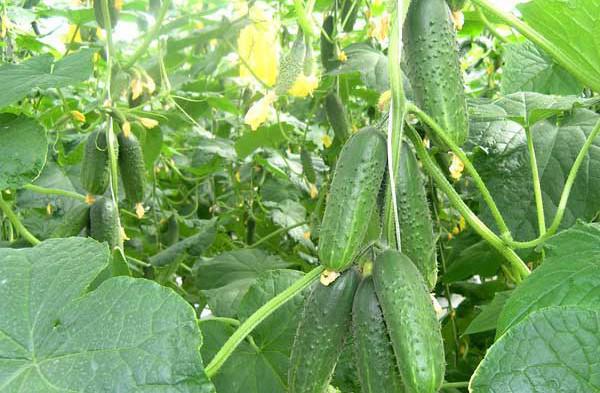

Fertilizer
Feeding for cucumbers Herman is introduced step by step:
- 20 grams of nitroammophoska per 10 liters of liquid when 3 true sheets are formed;
- a teaspoon of potassium sulfate per 10 liters of water during flowering;
- 30 grams of "Wonderful Garden" per 10 liters of water once a week during harvest.
Periodically, it is required to do mulching with a layer of humus up to 5 centimeters thick. This will save you from a possible short-term drop in temperature and increase the absorption of minerals.
Advantages and disadvantages of the Herman F1 cucumber variety
Like any variety or hybrid, Herman has disadvantages and advantages. But he has much more advantages than negative qualities. Among the advantages are the following:
- self-pollination ability;
- early harvest formation;
- high productivity; long fruiting period;
- suitability for growing in garden beds and in a greenhouse;
- resistance to a range of dangerous diseases;
- cucumbers are very tasty, have no bitterness;
- during storage, cucumbers do not turn yellow;
- attractive appearance of the fruit;
- versatility in the use of the crop.
Benefits
This hybrid has the following advantages:
- can be grown in greenhouses and outdoors;
- unpretentious care;
- immunity to powdery mildew, mosaic virus and cladosporiosis;
- pleasant taste of both fresh cucumbers and preservation;
- juicy pulp and lack of bitterness;
- excellent product characteristics;
- early and increased yield - 15-18 kg per square meter;
- long shelf life.
A good harvest of this hybrid is ensured even with inattentive care. The use of competent agrotechnical techniques significantly increases the yield of the bushes.
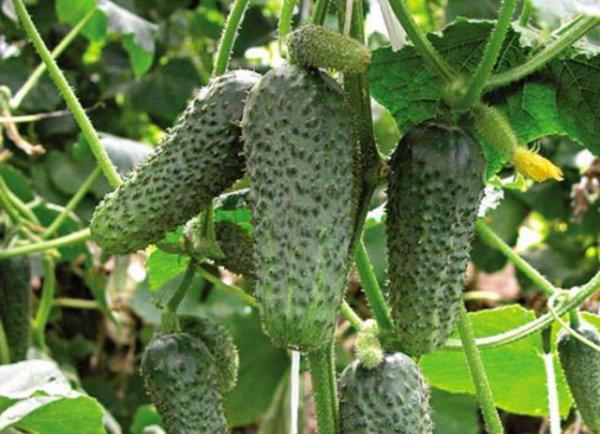

Growing seedlings of cucumber varieties German F1
For sowing seedlings, the dates and planting rules indicated on the package with seeds are observed.
Fresh articles for gardeners, gardeners and florists
Tomato seeds Siberian Garden catalog with description
Lunar calendar for april 2020 gardener and gardener
Diseases of strawberry photos and their treatment
How to feed cucumbers in a greenhouse to have a good harvest
Growing stages:
- Prepare boxes, pots and containers by treating them with a manganese solution.
- For soil, mix humus, peat, sand, in a ratio of 2: 1: 1.
- Add 2 g per 1 liter of a mixture of potash, nitrogen and phosphorus fertilizers.
- Sow 1 seed in pots, deepening no more than 1 cm.
- Drizzle to get the earthen lump wet, but do not overmoisten.
- Cover the planting with covering material or polyethylene.
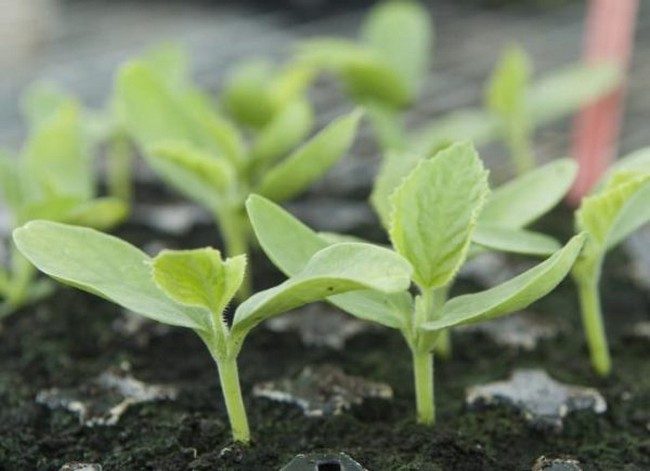

Optimal timing for planting
Experienced gardeners recommend growing this variety in seedlings. Sowing of seeds is carried out in the second half of April with the expectation that by the end of May, the seedlings are planted in open ground. If the seedlings are planted in a greenhouse, then planting is carried out in February-March, so that the first fruits begin to ripen in mid-spring.
Important! It is necessary to purchase seeds from official distributors. Original seeds are always treated with a pesticide (thiram) and colored red, green or purple. Uncolored seeds are fake.
As for the seedless method, it can be applied in the southern regions, which are characterized by the absence of temperature drops and recurrent night frosts, which are detrimental to productivity. Sowing in this case is carried out under the condition of well warmed up (up to + 18 ° C) soil and a night temperature of at least + 8 ° C.
Planting seedlings of cucumber varieties German F1 in the ground
They begin to prepare seedlings 3-4 weeks before the planned planting in the ground. Fortified sprouts with 4-5 main leaves are placed in holes or grooves, which are previously covered with a nutrient mixture of humus, peat, sand, nitrogen-containing fertilizers and watered abundantly with water (preferably hot). The soil is also prepared for sowing seeds. Cucumber seeds are placed one by one every 25-30 cm to a depth of 1.5-2 cm. It is recommended to leave a distance of at least 75 cm in row spacings, so that it is more convenient to care for the plants and harvest. Open beds with sown seeds are mulched with humus and covered with foil or other protective materials.
Top dressing
According to reviews, German cucumber is not afraid of diseases and gives a large amount of harvest. But the volume of the crop can be easily multiplied if fertilizers are applied. Mineral dressings and organics are suitable.
You need to apply fertilizer 3-4 times during the entire growing season. Root and foliar application methods are used. The scheme for introducing nutrients can be as follows:
- the first feeding two weeks after planting;
- the second - during flowering;
- the third - simultaneously with the ripening of the fruit;
- the fourth - at the end of fruiting.
To improve the yield, use ammonium nitrate, azophoska, ammofoska. Chicken droppings and any manure are also used. Organic matter is applied by the root method.
Organic compounds contain plant and animal elements. When decomposed, they form mineral trace elements, and carbon dioxide, which is necessary for photosynthesis, enters the earth's layers.
Mineral fertilizers are composed of various salts. They can be one-piece and complex. Spraying refers to the foliar feeding method.
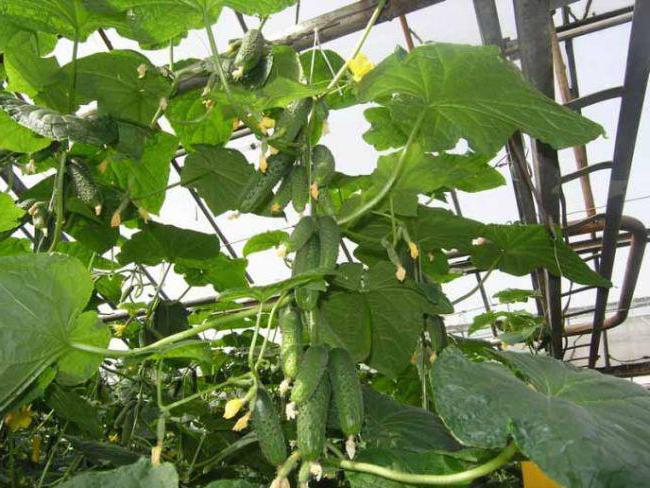

Forming cucumber Herman F1
For the German f1 hybrid, it is recommended to form a plant in one stem on a trellis with a gradual growth of fruiting shoots upward:
- At the first stage, blinding (pinching of ovaries and shoots) is carried out in the axils of the first four leaves. This is to ensure that the plant forms a strong root system.
- Then, in the axils of the 5th and 6th leaves, the shoots are pinched, leaving one ovary at a time. In the axils of the 7th - 10th leaf, all shoots are also removed, leaving two ovaries each. At this stage, the formation can be stopped. When the top of the plant reaches the trellis, it can be run along it or directed downward and pinched 1 meter from the ground.
- However, this is just one of the options for forming a bush into one stem; other schemes can be found on the Internet.
It is also required for preventive purposes to process the whips from rust.
Harvesting and application of the crop
Zelentsy begin to collect in 36-40 days after full germination - once every two days. This guarantees long-term and abundant fruiting.
Harvesting is carried out in the morning or in the evening.... The fruits of the bundle type are not broken off, but cut with scissors, trying not to touch the young ovaries. Cucumbers are used for making salads, pickling and pickling.
Shelf life of collected products in a cool place - no more than a week.
Reviews about cucumbers Herman F1
According to the reviews of our readers, the cucumber German F1 is the best suited for growing them in a personal subsidiary farm. Ease of cultivation, good immunity to diseases, combined with high yields - all these qualities make this variety one of the leaders.
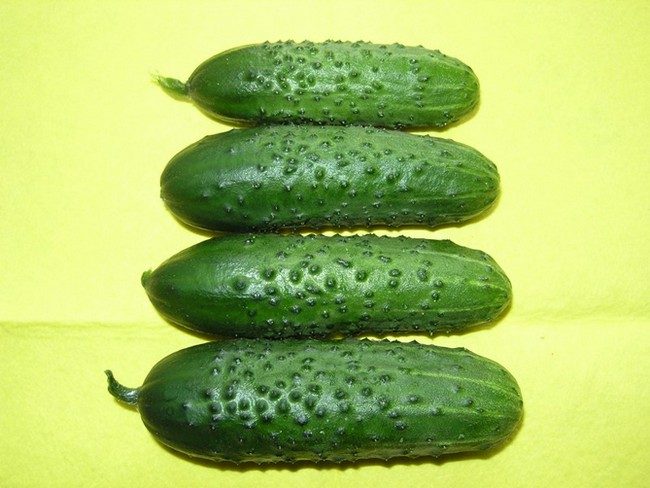

Cultivation in open beds
Cucumbers "Herman", the description of the variety, the reviews of which we are considering, germinate well in the beds in the open air. Problems during landing, most likely, will not arise. Backyard owners say seeds germinate even if they are simply thrown into the ground. So to cope with the task by forces and beginners in the gardening business.
Before sowing, the seeds are hardened. They are placed in a salt solution and kept for 10 minutes. Those that float are not suitable for landing, they are thrown away.
Suitable seeds are disinfected in a weak solution of potassium permanganate. Next, the seeds are treated with fertilizers. It can be ordinary wood ash, seeds are placed in it for 6 hours.
At the very beginning of the growing season, mechanical damage to the root system of cucumbers is dangerous, therefore they are planted in peat containers. So the roots will not collapse during transplantation.
To carry out heat treatment and hardening of seeds, they are kept for two days at a temperature of 48-50 degrees.

